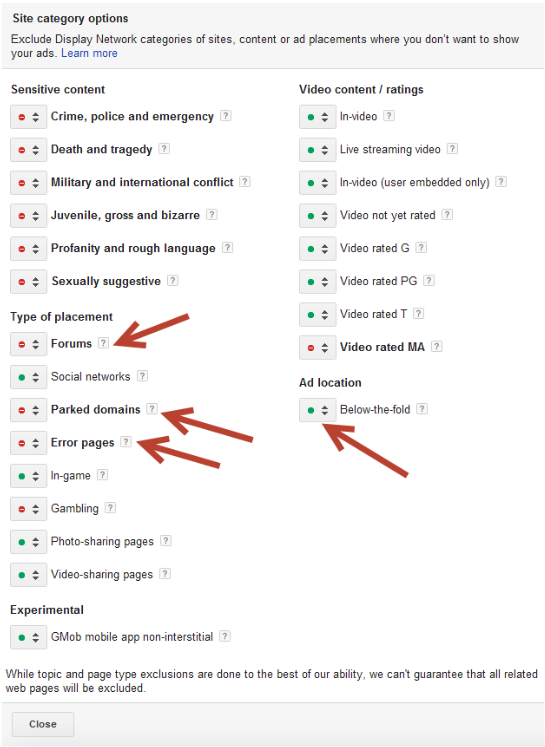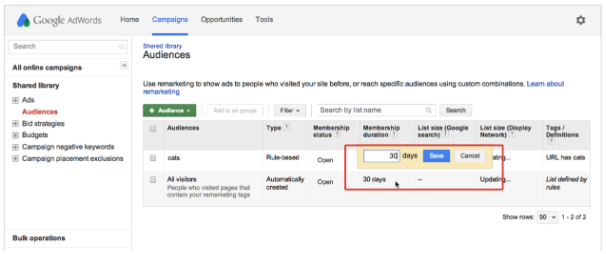Should Your Brand Launch a Google Ads Remarketing Campaign?
Lorem ipsum dolor sit amet, consectetur adipiscing elit, sed do eiusmod tempor incididunt USD-1615200753 ut labore et dolore magna aliqua. Ut enim ad minim veniam, quis nostrud exercitation ullamco laboris nisi ut aliquip ex ea commodo consequat.
Arguably your most valuable campaign audiences are those who have already shown interest in your brand by coming into contact with your app or website.
That’s why Google Ads has a feature enabling you to target these specific groups. Shoppers who are reminded of your products and services by encountering your remarketing campaigns are more likely to buy from your store!
What Is a Remarketing Campaign?
Remarketing search and display campaigns enable you to reach perhaps your highest-value audience: those who have already visited your website, used your app, or otherwise engaged with your brand online. This group is crucial to establishing a base of long-term customers who return to make repeat purchases.
What Are the Two Types of Audiences to Whom You Can Remarket?
1) Google Ads Customer Match list
With Customer Match, you can upload your customers’ email addresses directly to Google Ads. That way you can reach your most valued customers from within the platform itself, which matches the list of email addresses to profiles on Chrome so you can target any user who is signed in.
Of course, users have the option of controlling the ads they see when logged in to Chrome, including Customer Match ads. If they want to block their browser from showing your ads, they can opt-out of personalized ads or mute or block individual ads in their Google Ads settings.
Customer Match isn’t available to all advertisers as you have to meet certain criteria, and it isn’t available in every country. But if Customer Match is open to your business, you’d be wise to grasp the opportunity! Through its lists, you can leverage your collected customer data to reach new and ever-widening audiences, simultaneously expanding and refining your reach.
2) Google Ads Remarketing Audiences
Remarketing means advanced targeting of those users who have previously engaged with your app, website, or brand. Through Google Ads, you can create remarketing lists, which are then implemented in various campaign types.
You can set up your lists on Google Ads by using remarketing tags. All you need to do is add a snippet of code to your website from Google Ads. This remarketing tag enables you to add the global site tag and optional event snippet.
Remarketing tags capture information about visitors and the pages they view, but they must be installed on every page. These snippets are incredibly useful for tracking visitors’ behaviours, as you can utilise this knowledge in future ad campaigns.
Alternatively, you can set up remarketing tags through Google Analytics, then import the data into Google Ads to use in your campaigns. You’ll need the Google Analytics tag installed on your website to link your Google Ads and Analytics accounts.
You’ll also need administrative access to the former and edit access to the latter. It’s worth noting that there’s a limit of 2,000 remarketing audiences per Google Analytics account.
What Are Best Practices for Setting up a Remarketing Campaign in Google Ads?
Understand Frequency Capping
Frequency capping is the most fundamental of all remarketing best practices—it’s the difference between lightly reminding audiences about your brand and stalking them across the web until they loathe the very sight of your logo.
So when deciding on your frequency cap, consider how many remarketing campaigns you have currently. If you have more than one, I recommend starting off with two impressions per week per campaign.

Once your campaigns have been running a while and you’ve garnered significant data, review their reach and frequency to see how often your visitors are being served your remarketing ads. Assess whether it’s too often or infrequent, and adjust the cap accordingly.
Track Conversions
Conversion tracking for remarketing is set up in the same way as for standard campaigns, but be aware that if you import goals or eCommerce tracking from Google Analytics to be tracked as conversions in Google Ads, they won’t track view-through conversions.
This can be limiting because remarketing tends to contribute to a strong level of view-through conversions, and you’ll have zero visibility of this if you import goals or eCommerce tracking from Analytics to be tracked as Ads conversions. So instead use a standard Ads conversion tracking code for your remarketing conversion tracking.

Hone the Creative
Ideally you’ll have a bespoke ad creative for each strategy and list, ensuring each creative is maximally relevant to the target audience. You can also tinker with the following ideas:
- Ensure continuity from your website design to your ad, and include your logo. These measures mean users know the ad is from the website they recently visited.
- If you create an animated ad, have a still version available too, as not all sites support animated ads.
- Include a text ad in each ad group, as well as one of every ad size, as some sites don’t support image ads or all ad formats.
- Include a CTA button, and demonstrate any USPs or offers.
Stop Your Ads Showing Up on ‘Bad’ Content
You may want to exclude certain site categories so your ads aren’t shown on the content you don’t want to be associated with your brand.

You might also wish to exclude forums, error pages, and parked domains, as these tend to contain poor content. You could experiment with excluding your ads from showing below the fold to see how this affects performance. Just be aware that you may need to bid higher to ensure your ads are always eligible for above-the-fold placement.

Finally, beware of excluding too much—after all, remarketing isn’t so much about the relevance of the site as it is about targeting based on users’ behaviours.
Refine Your Targeting by Remarketing Only to ‘Quality’ Visitors
You can narrow down your marketing so it targets only those users who have had a ‘quality’ interaction with your brand, such as by adding criteria to your lists excluding users who have bounced or spent less than 10 seconds on your website.
List Membership Duration
Set your list durations according to what you want to achieve. If you’re targeting people for an annual purchase, go for at least 13 months. If you’re advertising a service that requires signup after a 30-day free trial, go for 60 days—that way you know users will be targeted for a reasonable amount of time after their trial to encourage signup.

What Are the Best Practices for Optimising Your Remarketing Campaign?
Test Your Ad Creative
Try different colours for your CTA buttons, revise your wording, and rethink your images. As with all split testing, make only a single small change to the new ad at a time, or you won’t be able to pinpoint which alteration had an impact.
Remember Normal Optimisation Techniques
It’s easy to get carried away with new and shiny optimisations specific to display and remarketing while letting general tried-and-tested best practices fall by the wayside. These include reviewing performance:
- by location, and using location bid adjustments
- by time of day, and using scheduling bid adjustments
- on mobile devices, and amending mobile bid adjustments.
Test Your Landing Pages
Send users to different pages across your site. Say they viewed a more expensive version of a product last time—this time land them on a less expensive version. Or if they viewed an item from a particular range of products, land them on the main category page rather than back on that same product page. You could even set up a custom experiment to ensure a completely fair test.
Test Your List Criteria and Custom Combinations
Setting up lists isn’t just important at the start of your remarketing project—you should experiment with your lists and combinations as part of your optimisation process to see which works best. Try:
- tweaking list member durations, and perhaps playing with different messaging for different durations while you’re at it—after all, a message that worked a week after a user visited your site might not be as effective once a month has passed
- excluding different lists using custom combinations, such as excluding users who bounced or spent less than 10 seconds on your site
- excluding different categories, like forums, games and parked domains.
What Types of Display Ad Would Be Best for Your Remarketing Campaign?
Responsive Display Ads
This partly automated process is a seriously creative way to leverage Google’s algorithm to play a part in determining the best visuals for reaching your target audience. Simply enter your ad text, upload your images (including through automated website scanning if you find that more accessible), and add your logo. These ads are shown as native ads, meaning they blend into the font and feel of the website on which they appear.
Uploaded Image Ads
Image ads are available if you have a graphic design team who can create specific ads to match with the theme of your brand. These ads are available in a range of sizes and also in HTMLs.
Remember: You Can Find True Best Practice Only Through Trial and Error
Don’t be disheartened if your remarketing campaign gets off to a rocky start: the competition is fierce, and Google’s algorithms are notoriously opaque at the best of times! All you can do is tinker with the multitude of variables laid out before you, monitor the impact of changing each individually, and strive to continually optimise your campaigns accordingly.

